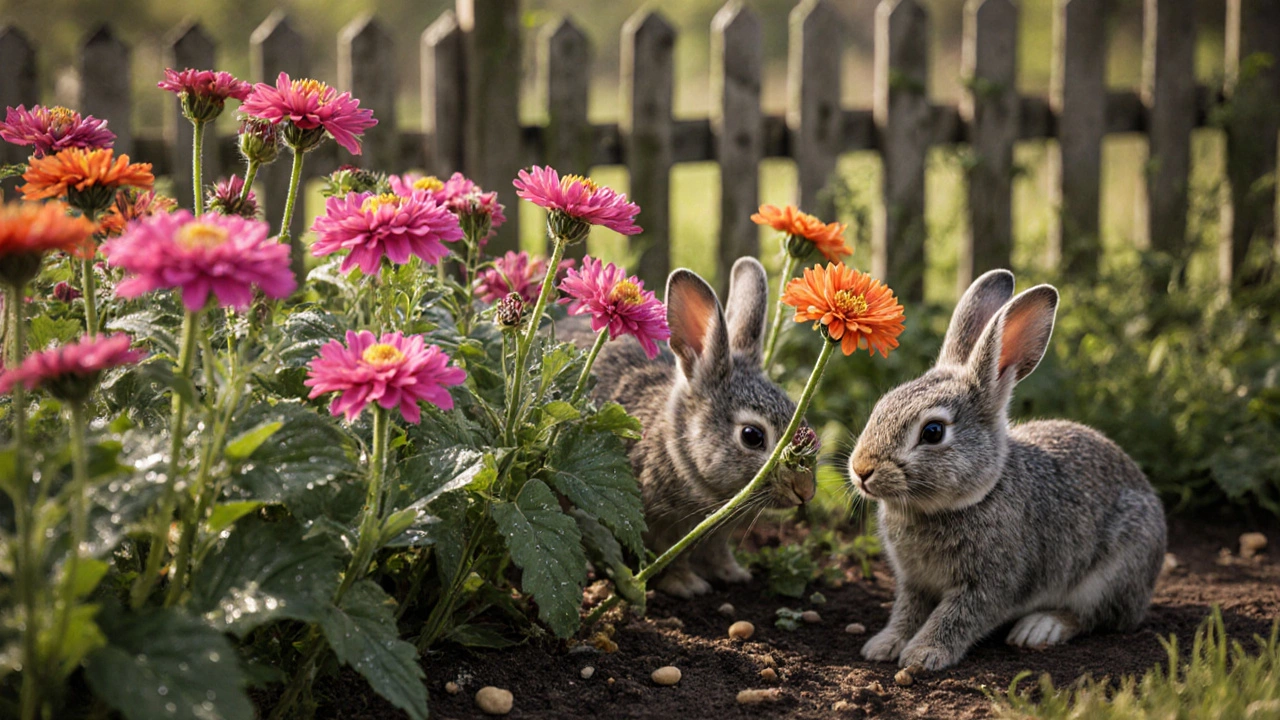Rabbits do eat zinnias, especially in spring and fall. Learn how to protect your kitchen garden flowers with simple, effective strategies - from cages to companion planting - without using harsh chemicals.
Rabbits and Zinnias: What You Need to Know Before Planting
When you plant zinnias, bright, easy-to-grow flowering plants popular in Indian gardens for their long bloom period and low maintenance. Also known as Indian marigolds, they’re a favorite for balconies, compound walls, and small backyard plots. But if you’ve noticed your zinnias suddenly nibbled to the stem, you’re not alone. rabbits, small herbivores common in rural and suburban areas across India, especially near fields, parks, and unsecured gardens see zinnias as a snack, not a decoration. These animals don’t care about your garden’s design—they’re driven by hunger, and zinnias, with their soft leaves and tender stems, are practically a buffet.
It’s not just zinnias. Rabbits also target marigolds, lettuce, and young seedlings. But here’s the thing: you don’t have to give up on zinnias just because rabbits are around. Many gardeners in places like Pune, Hyderabad, and Lucknow have figured out how to grow zinnias without losing them to hungry bunnies. It starts with understanding what rabbits avoid—like strong-smelling herbs, prickly plants, or those with fuzzy leaves. organic gardening tips, natural, chemical-free methods to protect plants while keeping soil and pollinators healthy can help you outsmart rabbits without harming them. A sprinkle of crushed eggshells, a garlic spray, or planting zinnias near rosemary or lavender can make a big difference.
Some people try fencing, but in Indian homes with limited space, that’s not always practical. Others use repellents, but many commercial ones wash off in monsoon rains. The real solution? Combine smart planting with habitat control. Keep tall grass and brush away from your garden—rabbits love hiding spots. Plant zinnias in raised beds or containers on balconies where rabbits can’t reach. And if you’re growing vegetables nearby, put zinnias at the edges as a decoy—they’ll distract the rabbits from your tomatoes or brinjal.
You’ll find plenty of posts here that dig into these strategies. Some show exactly how to make a homemade rabbit repellent using ingredients you already have. Others explain which plants work best as natural barriers in Indian climates. There are even guides on how to tell rabbit damage apart from other pests like slugs or caterpillars. This isn’t about eliminating rabbits—it’s about sharing your space with them without losing your flowers. Whether you’re gardening on a terrace in Mumbai or a small plot in Rajasthan, the same principles apply. With a little planning, you can enjoy colorful zinnias all season long—and still see rabbits hopping by, just not eating your hard work.
